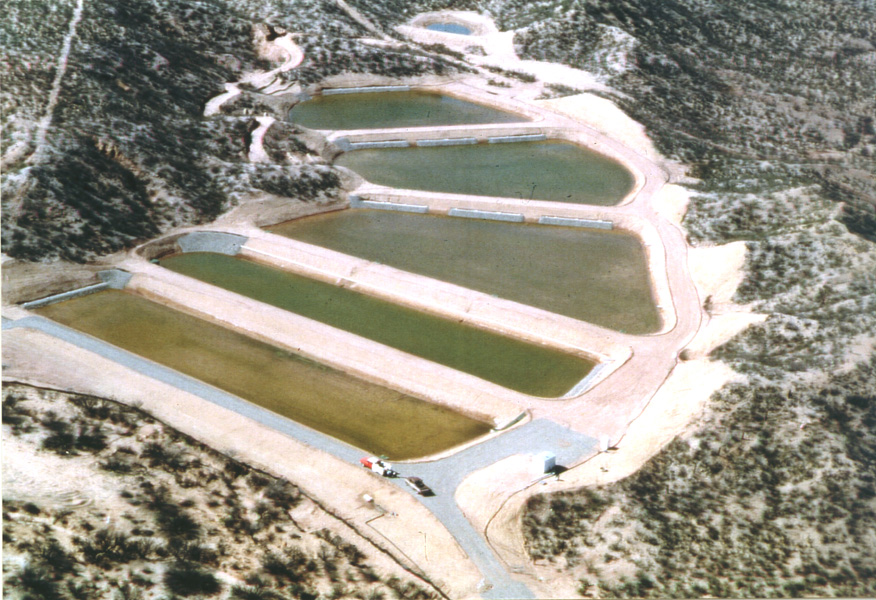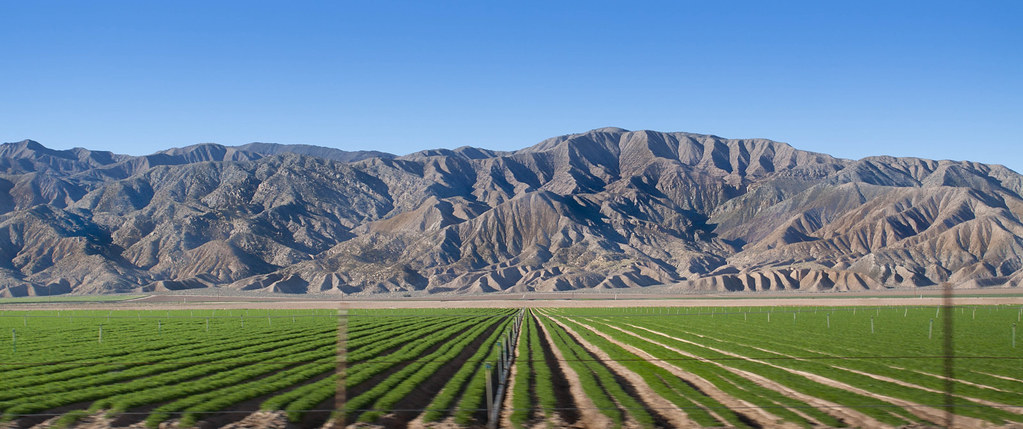Groundwater is an essential source of water supply for municipal and agricultural resources in California’s Central Valley. This water source supports the Central Valley in producing up to 25% of the nation’s billion-dollar food supply and provides drinking water for millions of people.
The aquifers of the Central Valley have been pumped of their water for more than 100 years, causing large overdrafts mainly in the central and southern portions of the valley. While the valley’s water supply has been bolstered by engineered surface water supplies since the 1960s, there has been an increasing reliance on groundwater resources in modern eras of drought.
Despite heavy groundwater use in the past two decades, minimal oversight of groundwater pumping has renewed concerns of long-term groundwater depletion among water resource managers in the region.
In this blog, we’ll look at vulnerabilities in achieving goals under California’s Sustainable Groundwater Management Act using groundwater modeling as a tool and how managed aquifer recharge projects can contribute to long-term groundwater sustainability of today’s overdrafted aquifers.
What is the Sustainable Groundwater Management Act?
California passed the Sustainable Groundwater Management Act (SGMA) in 2014. The overarching goal of this legislation was to take a long-term view of groundwater sustainability with the understanding that future surface water supplies may be impacted by climate change. A key piece of this legislation established a large-scale monitoring program of groundwater levels and pumping combined with indicators of decline in groundwater sustainability.
The legislation created Groundwater Sustainability Agencies (GSAs) and assigned these agencies responsibility for establishing guidelines for so-called ‘Sustainable Management Criteria’. GSAs in overpumped basins were required to create a 20-year groundwater sustainability plan with measurable objectives and minimum thresholds for each undesirable effect of groundwater overconsumption.
By the letter of the law, a minimum threshold and measurable objective must be clearly defined for every monitoring well designated in a SGMA sustainability plan. These goals are set at each monitoring location or indicator well with the goal of achieving groundwater sustainability by the year 2040.
For example, when managing groundwater level decline and storage reduction, a measurable objective is the target water level or water storage value at a specific indicator well location that is the desired goal in the managed region. Similarly, a minimum threshold is the water level or water storage value which represents the lowest acceptable limit at the specific indicator well location over the management time horizon.
Groundwater Modeling Suggests Failure to Reach SGMA Sustainability Goals in the Central Valley
A recent groundwater modeling study conducted at San Diego State University (SDSU) evaluated long-term sustainability goals set by SGMA for critically overdrafted groundwater basins in Central Valley. The goal of the study was to predict if the SGMA goals established for individual indicator wells are attainable and evaluate factors that may help GSA’s in the region reach SGMA’s long-term sustainability goals.
Modeling conducted in the study utilized the U.S. Geological Survey (USGS) Central Valley Hydrologic Model (CVHM). The model was initially developed to assist water managers in understanding the Central Valley’s aquifer system, predicting water supply scenarios, and addressing water allocation issues. The CVHM is a three-dimensional numerical model of the groundwater flow system of the entire Central Valley. The model combines six hydrogeologic elements:
- lithologic data
- hydrologic data including major inflows to the system as well as historical groundwater data
- subsidence data
- water consumption data
- types of land use
- surface water inflows
The SDSU Study used the CVHM to project future groundwater elevations simulated under three scenarios:
- Scenario 1- baseline pumping (consistent with current trends)
- Scenario 2- increased groundwater pumping
- Scenario 3- decreased groundwater pumping
Results of the modeling suggested that up to 50% of SGMA indicator wells will fail to meet their 2040 sustainability goals under Scenario 1 (baseline pumping) and Scenario 2 (increased pumping). This data leads one to conclude that groundwater sustainability in the area may be difficult to achieve unless pumping rates are decreased or groundwater is otherwise replenished.
Transboundary Water Supply Depletion
One factor of SGMA that needs to be considered by GSAs is the effects of transboundary water supply depletion between neighboring management areas, where groundwater levels may decline due to pumping that occurs outside an individual GSA’s boundaries. The SDSU study shows that in almost all future modeled scenarios there is some degree of transboundary groundwater depletion. The severity and extent of transboundary depletion is projected to increase with increased pumping in all future scenarios. By 2070, the most extreme case of future pumping shows large-scale transboundary depletion extending far across GSA boundaries – in some cases reaching tens of kilometers.
Mitigation of transboundary depletion will require cooperation between neighboring agencies. Under SGMA, it is believed that sustainability is best handled at a local level. This cooperation can be seen within the smaller agencies that make up a larger water basin subregion but not necessarily across the entire water basin subregions.
The potential for significant transboundary depletion suggests there is a clear necessity for interagency cooperation. The GSAs with high transboundary effects should seek to understand the extent of their groundwater pumping across management regions. With this understanding it would be helpful to quantify what percentage of indicator wells are failing to meet sustainability goals due to those transboundary effects and what volume of groundwater is being pumped to meet demand from neighboring agencies.
Managed Aquifer Recharge is a Sustainable Option
What if decreasing or even sustaining current pumping rates in the future are not viable options to help achieve sustainability? Many water agencies are faced with increasing water demands that will make declining pumping rates in the future unachievable. The SDSU Central Valley study projected groundwater levels causing failure to meet SGMA objectives will occur with continued pumping at current rates, so the study evaluated the effects of decreasing future pumping rates.
Upon decreasing pumping rates, projected SGMA well failure rates were only slightly lower compared to the baseline model, suggesting a decline in pumping rates alone is not a sustainable solution. To achieve SGMA goals, additional actions may be needed to counteract drawdown and supplement groundwater supplies. This is the case in many critically overdrafted groundwater basins.

Managed aquifer recharge (MAR) is an option to boost sustainability where excess water supplies available during non-drought times are stored in the aquifer for use during future times when water supplies may fall short. These projects include a variety of MAR concepts including surface spreading and direct injection using injection wells, dry wells, and drains. The SDSU Study simulated various recharge projects to combat pumping-related water level declines to help provide a clearer picture of what it may take to achieve sustainability. The Study concluded that understanding the efficacy of recharge projects will be pivotal in reaching sustainability goals by 2040.
Most MAR projects begin with several qualified potential site locations. Water resource managers should carefully screen potential MAR sites to identify which has the best likelihood of a successful project outcome. To simplify the site screening process, the sites being considered can be systematically ranked based on components in the four conceptual considerations – location constraints, surface conditions, subsurface conditions, and engineering and operational challenges.
Hargis is assisting the Mojave Water Agency (MWA) in evaluating managed aquifer recharge to increase its capacity to store and recover State Water Project water and provide future long-term replenishment of the regional aquifer. Learn more about the Agency’s Oeste Demonstration Recharge project in this case study.
If you’re exploring options for groundwater sustainability, Hargis can help. Our engineers and hydrologists have steadfast reputations working with municipalities, water agencies, and private landowners to achieve their groundwater sustainability goals.
Hargis develops effective use of groundwater supplies using a variety of methods including groundwater resource evaluations, impact and mitigation analysis, and water well and recharge basin design. Hargis provides comprehensive groundwater monitoring networks, groundwater management planning, well design, well rehabilitation, and construction support services. Connect with us.

